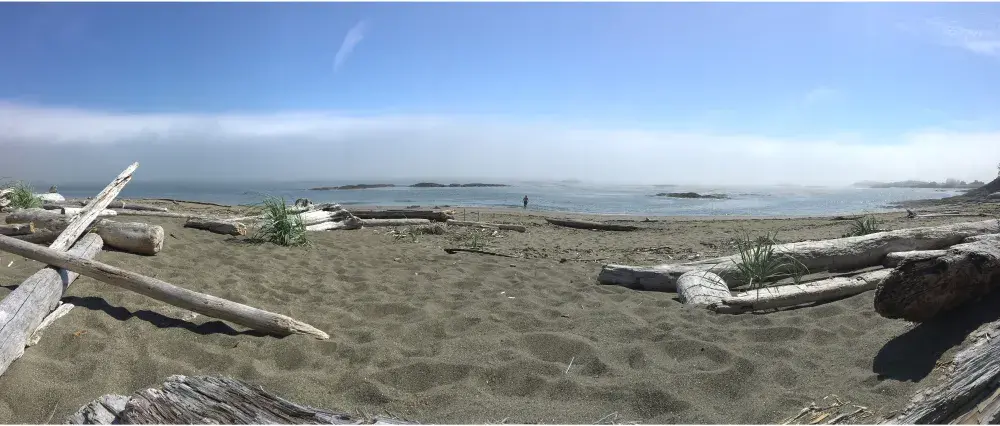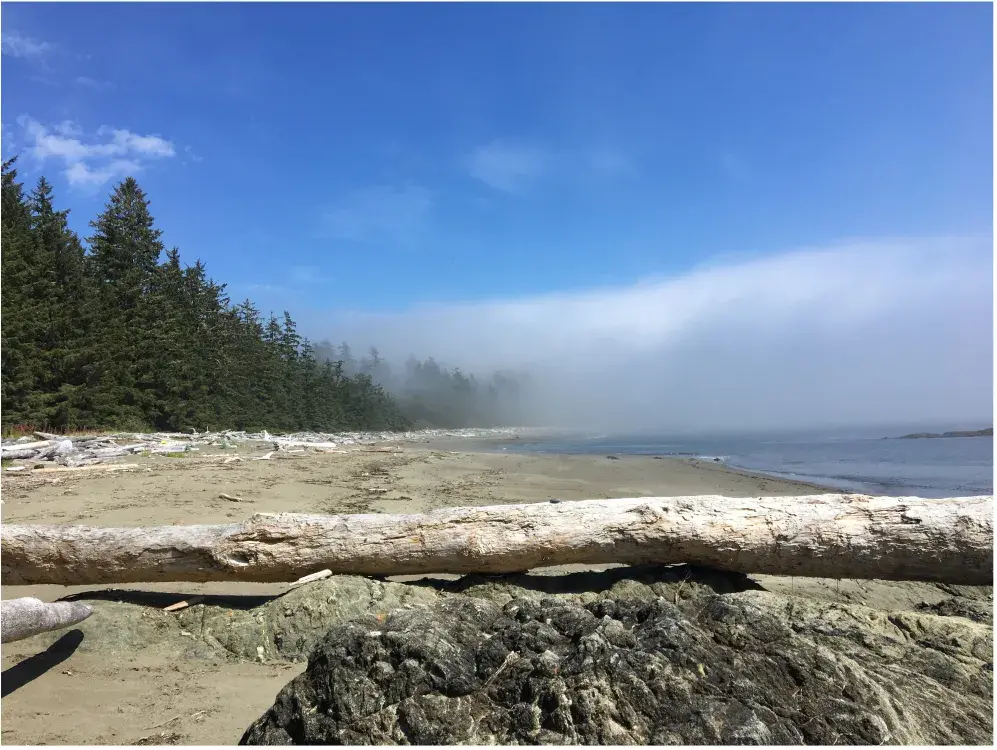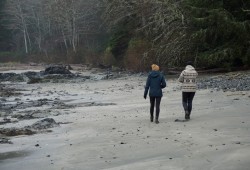A new tourism fee program is being investigated by the Huu-ay-aht First Nations that would support the development of ecological and cultural stewardship in the Bamfield and Anacla area.
The potential project is in collaboration with the Island Coast Economic Trust and inspired by the Tla-o-qui-aht First Nation’s successful Tribal Parks Allies program launched in 2018.
This strategy invites businesses and organizations to sign a protocol agreement that commits them to contribute a one-per-cent Ecosystem Service Fee to fund action items defined in community plans, such as environmental and cultural stewardship initiatives.
With new road infrastructure improving access to Bamfield and the Huu-ay-aht’s traditional territory, the First Nation is expecting a major influx of tourism. The development of new partnerships with local businesses and tourism operators aims to create a revenue stream that will be directly reinvested in long-term stewardship of Huu-ay-aht territories, enabling sustainable tourism development.
“We’re hoping to have these Allies fees linked to ecology and stewardship, so some of the environmental stewardship programs that we would be contributing to would have to do with things that are very important to our community on a cultural resource perspective as well as a tourism and hospitality perspective,” said Huu-ay-aht Chief Councillor John Jack. “The usage of the monies would be for watershed renewal and restoration, so ensuring that that money could be channeled in a productive way to ensure that…rivers and streams as well as our oceans are taken care of.”
Jack said popular tourist attractions in the Bamfield and Anacla area continue to be the northern trail head of the West Coast Trail, Pachena Bay Campground and music festival and touring Kiixin, an ancient village site and fortress that dates back 5,500 years.
“We do have opportunities to work with Parks Canada on creating a more trail-based experience in the local area as well which may mean that we would have…people who are going to hike five to 10 kilometres for a couple of days throughout a week’s stay,” Jack said.
The Allies Tourism Fee Development program will work with participating businesses, recognized as ‘Allies,’ and be identified as such through the display of the Allies logo. Together, allied members and the First Nation would work in a mutually beneficial way that is respectful of Indigenous rights while helping to mitigate the impacts of tourism.
“Part of what we want to do is reiterate this is an exploration of an idea,” Jack said. “We’re looking at having meaningful conversations with local businesses as well as residents who may be entrepreneurs themselves and making sure that it’s well understood that what we’re looking to do here is all work together…on preserving the very reason why our territory, our land and our experiences are valuable.”
The project includes a strategic planning and visioning phase, which will determine the specifications of the Huu-ay-aht Allies program, as well as the initiative’s development and launch. During the second phase, the program will invite Bamfield businesses and other operators utilizing Huu-ay-aht traditional territory to voluntarily participate.
"Bamfield and Huu-ay-aht territories continue to attract visitors who are looking for stunning beauty and adventures in nature," said Josie Osborne, MLA for Mid Island-Pacific Rim in a press release. "This innovative program will help ensure more of the profits from tourism go back to the Huu-ay-aht Nation and create partnerships that will support the region's ongoing prosperity."
Island Coastal Economic Trust is investing with Huu-ay-aht First Nations in the Allies Tourism Fee Development project through the Capital and Innovation Program. The trust will contribute $45,500 to a total project budget of $95,500. The project will be underway imminently.
“This initiative is a special one for the trust to invest in with Huu-ay-aht who are leading the way in developing a sustainable local economy along with an innovative approach to stewardship finance as the owners and stewards of their traditional territory,” said Aaron Stone, chair of Island Coastal Economic Trust, in a press release. “This new initiative will create new partnerships and revenues for Huu-ay-aht First Nations that benefit local businesses, citizens, and visitors in the years ahead.”



